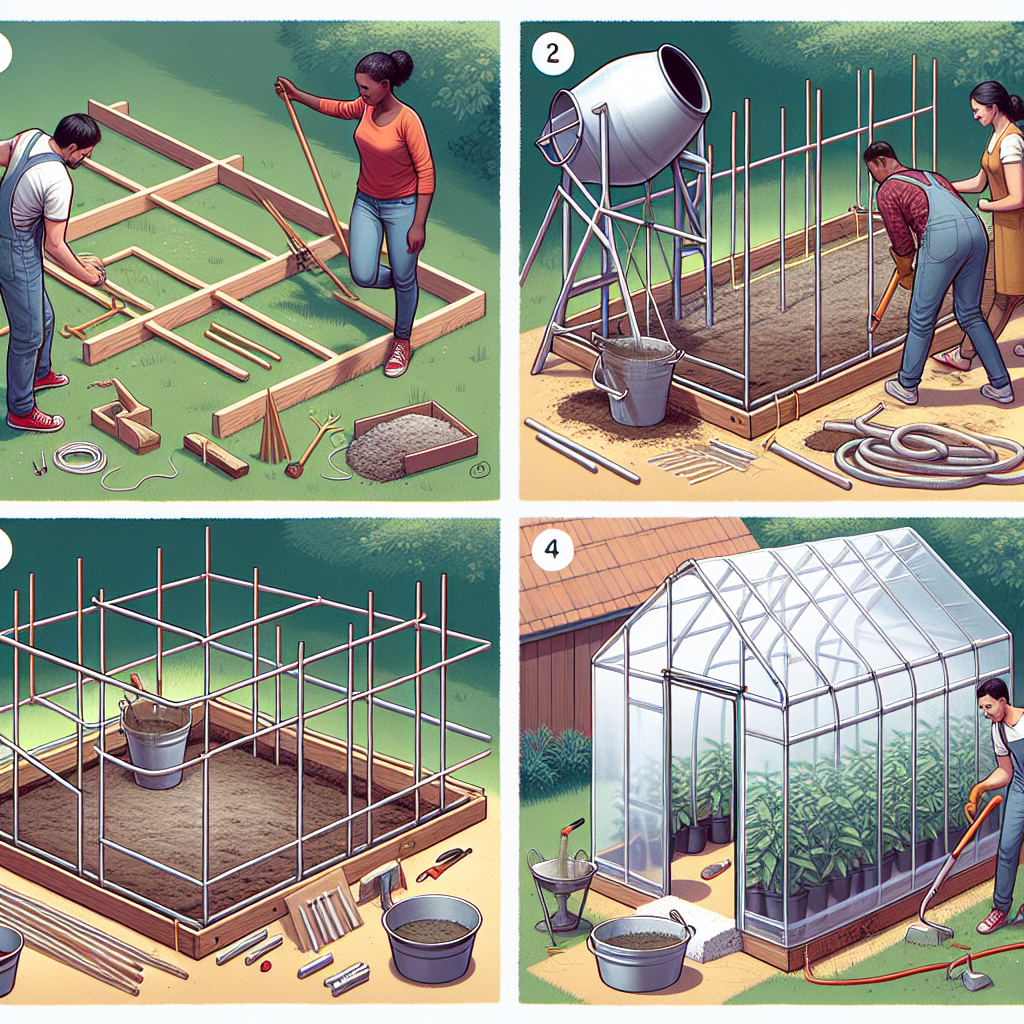
How to build a backyard greenhouse
Introduction to Building a Backyard Greenhouse
Are you ready to elevate your gardening experience? A backyard greenhouse can be a fantastic addition to your property, allowing you to cultivate plants year-round while controlling the environment to suit their needs. Whether you're a seasoned gardener or a novice, learning how to build a backyard greenhouse can open up a world of possibilities for growing vegetables, herbs, and flowers. In this article, we’ll explore the benefits of having a greenhouse, the different types available, and the steps to create one in your backyard.
Benefits of a Backyard Greenhouse
Having a greenhouse at home offers numerous advantages that extend beyond simply extending your growing season. Here are some of the primary benefits:
- Controlled Environment: You can regulate temperature and humidity, protecting your plants from harsh weather.
- Extended Growing Season: Plant seeds earlier in the spring and continue harvesting later into the fall.
- Diverse Plant Options: Grow tropical plants or delicate flowers that may not survive in your climate zone.
- Pest Management: Reduce the risk of pests and diseases that affect outdoor gardens.
- Enhanced Productivity: Increase crop yield with optimal growing conditions.
Choosing the Right Type of Greenhouse
Before learning how to build a backyard greenhouse, it's essential to understand the different types available, as each comes with its own set of features and considerations. Here are some popular options:
1. Lean-To Greenhouses
These structures are attached to a wall of your home or garage. Lean-to greenhouses are space-efficient and provide additional warmth due to the heat of the building.
2. Freestanding Greenhouses
Freestanding greenhouses can be placed anywhere in the yard. They offer more space for plant growth and can vary in size from small to large.
3. Quonset Greenhouses
This type features a rounded roof and is noted for its strength against winds and snow. They are often less expensive and easy to construct.
4. Gothic Arch Greenhouses
These greenhouses have a peak design which allows for better snow shedding and increased interior height, making them suitable for taller plants.
Planning Your Greenhouse
The next step in the process is planning the specific details of your greenhouse. Here are some key factors to consider:
Determining Size
- Consider available space in your backyard.
- Think about what types of plants you want to grow.
- Account for pathways for easy access.
Materials Selection
Choosing the right materials is crucial for durability and efficiency. Here’s what you’ll need:
- Frame: Common materials include wood, aluminum, or galvanized steel.
- Covering: Options include glass, polycarbonate, or polyethylene plastic.
- Foundation: Depending on the size and permanence, you may use concrete, bricks, or wooden skids.
Location
- Ensure the greenhouse gets sufficient sunlight, ideally 6-8 hours a day.
- Avoid placing it in areas prone to flooding or high winds.
- Consider proximity to water sources for irrigation.
Steps to Build Your Greenhouse
1. Gather Your Materials
Based on your chosen greenhouse design, compile the necessary materials. Here’s a basic checklist:
- Wood/metal for framing
- Plastic/glass panels for covering
- Concrete or treated wood for the foundation
- Tools (saw, drill, screws, etc.)
- Optional: ventilation fans, heating systems, shelving, and potting benches
2. Create a Foundation
"A solid foundation ensures the longevity and durability of your greenhouse."
Begin by marking the area where your greenhouse will be placed. Then, dig out the foundation area and level it. Depending on your chosen materials, you may build a concrete slab or place wooden skids to create a stable base.
3. Construct the Frame
Assemble the frame according to your chosen design. Use sturdy materials to ensure it can withstand environmental elements. For a lean-to structure, attach one side to your home’s exterior wall. If it’s freestanding, ensure all corners are square and aligned properly.
4. Add the Covering
Carefully apply the covering material to the frame. If using glass, ensure they are properly sealed to avoid air leaks. For plastic, stretch it tightly across the frame to prevent sagging and potential damage.
5. Install Ventilation and Shelving
Proper ventilation is essential for maintaining temperature and humidity levels within your greenhouse. Consider adding:
- Ridge vents at the top for hot air escape
- Side vents or windows for cross-ventilation
- Fans to circulate air
Then, incorporate shelving or potting benches to organize your plants and gardening tools effectively.
6. Final Touches
Once the main structure is finished, check for any loose screws or fittings. Make sure your greenhouse is airtight and well-insulated. Finally, consider adding pathways for easy access and creating a watering system for your plants.
Maintaining Your Greenhouse
Building a greenhouse is just the beginning; maintenance is key to ensuring its longevity and effectiveness. Here are some tips:
- Regular Cleaning: Keep surfaces free from dust, algae, and pests.
- Monitor Temperature: Use heaters or cooling systems as needed to maintain an ideal climate.
- Check for Pests: Routinely inspect plants for signs of pests or diseases.
- Seasonal Adjustments: Adapt your watering, shading, and ventilation strategies with changing seasons.
Conclusion
Creating your backyard greenhouse is an enriching process that can enhance your gardening abilities and contribute to your overall lifestyle. By understanding how to build a backyard greenhouse and following the essential steps, you’re well on your way to reaping the many rewards that a greenhouse can offer. With the right planning, materials, and maintenance, your greenhouse can become a flourishing oasis right in your backyard.
Now, all that’s left is to gather your materials, grasp that hammer with confidence, and get building. Happy gardening!
By Guest, Published on September 19th, 2024